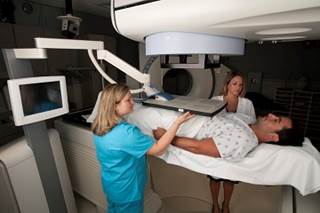Prostate Cancer Death Risk Linked to Post-EBRT Time to PSA Nadir - Renal and Urology News


Men with unfavorable-risk prostate cancer who had a detectable PSA nadir and a time to PSA nadir less than 12 months had a 5-fold increased risk of dying from their disease.
Men with a short time to PSA nadir (TTN) and a detectable PSA nadir following external beam radiation treatment (EBRT) with or without androgen deprivation therapy for unfavorable-risk prostate cancer are at elevated risk of dying from their cancer, investigators concluded.
Among men with a detectable PSA nadir (0.2 ng/mL or higher), those with a TTN less than the median of 12 months had a significant 5-fold increased risk of cancer-specific death in adjusted analyses than men who had a TTN of 12 months or more, according to study findings published in Urology. Investigators did not observe this association among men with an undetectable PSA nadir (less than 0.2 ng/mL).
The finding could have important disease management implications. “We are excited about this work because it identifies a subset of patients who are at higher risk for cancer-specific mortality who might benefit from early intervention,” lead investigator Luke R.G. Pike, MD, DPhil, of Dana-Farber Cancer Institute and Massachusetts General Hospital in Boston, told Renal & Urology News. “That is, those patients who have a detectable PSA and a short interval to PSA nadir might thus be selected for more intensive treatment up front, such as with next generation anti-androgens such as enzalutamide, long before they develop PSA failure or macroscopically visible disease. This would should be validated in ongoing clinical trials enrolling men with intermediate risk disease.”
Dr Pike and his colleagues performed a post-randomization study of patients treated in a prospective, randomized, controlled trial that included 204 men with unfavorable-risk PCa (PSA level greater than 10 but less than 40 ng/mL, a biopsy Gleason score of 7 or higher, or magnetic resonance imaging evidence of extracapsular invasion, seminal vesicle invasion, or both). The men underwent EBRT to a total dose of 70.2 Gy in 1.8 Gy fractions with or without 6 months of androgen deprivation therapy. Of the 204 men in the study, 113 had a detectable PSA nadir and 91 did not. As part of the study protocol, the team followed up patients every 3 months for 2 years, every 6 months for the subsequent 3 years, and then annually thereafter until time of death or October 9, 2016. After a median follow-up of about 18.2 years, 160 men died, 30 from PCa.
Reference
Pike LRG, Wu J, Chen MH, et al. Time to PSA nadir and the risk of death from prostate cancer following radiation and androgen deprivation therapy. Urology. 2019; published online ahead of print.
http://bit.ly/2MC7Fmb



Comments
Post a Comment